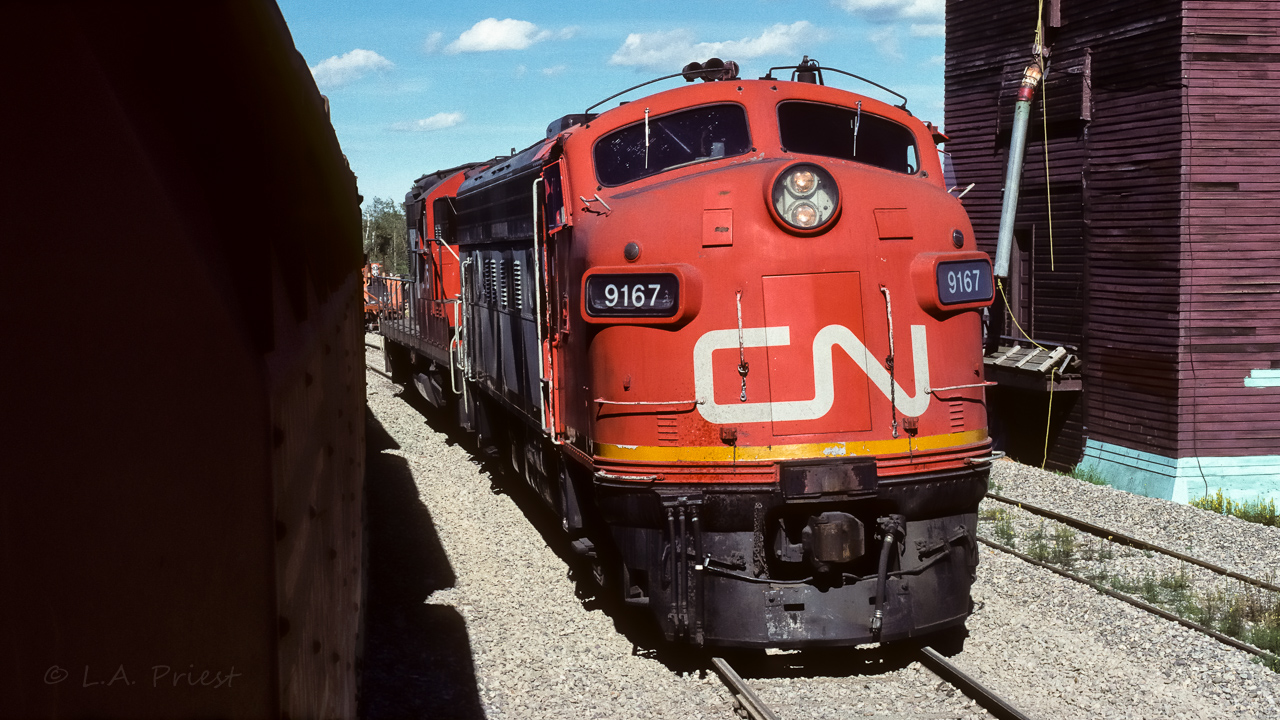|
Caption: While the crew goes in for dinner at 17:00, why not take a few sunny nose photo's. You can see the extent of the section work, all tracks have been newly ballasted. The section machines are parked on the elevator track, empty ballast cars on the main and units in the siding. Everyone is in at the Redwater Hotel. Many of the people who worked out in the field (oil field etc.) would pull up at the lunch or dinner hour, a favourite haunt.
|



Those F’s with the red anticlimber always looked a little odd with the yellow stripe applied above.
That and the 4 buttons around each front window for attaching the protective covers for snowplow operation.
What’s an anticlimber?
The ledge of metal along the frame at the front of a loco. Here, it is the strip underneath the orange stripe, it has the metal ridges and is interrupted by a block of metal above the coupler. Not so prominent on 1st generation loco’s. SD40′s and the like really sport protruding anticlimbers. They help keep broken rail from entering the cab during a derailment.
IIRC, part of the purpose of an anticlimber was to prevent one vehicle from riding up on the top of another during an accident or collision (“anti” – “climb”). The ridged edges would help lock into the other vehicle or anticlimber during a collision. Streetcars often had them as well for similar reasons.
On some later EMD SD and GP units, they were used as basically a platform extension to allow a crew walkway around a longer short hood, on the same length frame.